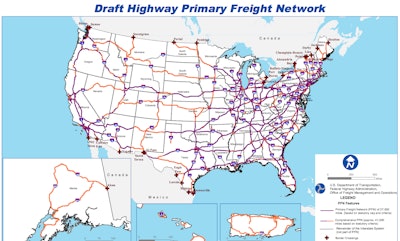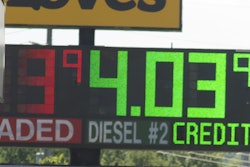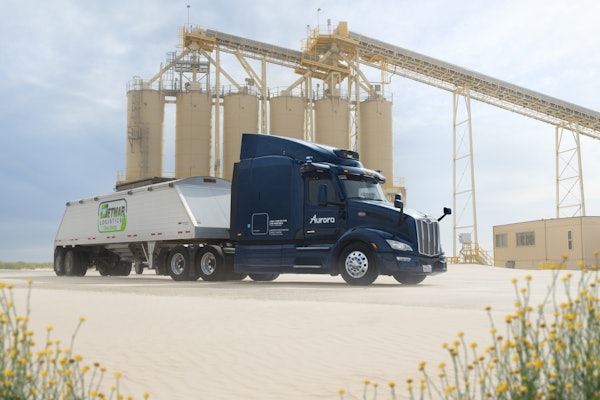A TV commercial from the early 1980s had a tagline that, as kids today would say, ‘went viral’: “You can pay me now, or pay me later.” Does the slogan hold for highway funding? It does, in that there’s a penalty for neglect – but the inconvenient truth is we’re paying now, and we’ll have to keep paying later. The real questions: Who should be paying whom, and how much? And, most importantly, what happens if we can’t get our political will together to pay more?
Those of us of a certain age can watch the Fram oil filter video now and laugh, especially those who shed teen/twenty-something tears over the state of the auto industry about then: Cars went from 400-horse, big block Detroit iron to rattle-trap 4-cylinder imports (and their even more woeful US imitations) in a half-decade. Not that horsepower mattered, with an oil-crisis imposed 55 mph national speed limit. But I digress. I’m over it, really.
[youtube aq3wL8ZXjBU nolink]
I ponder this as the “highway infrastructure” pile on my desk continues to grow: reports, surveys, op-eds, hearings. And that’s good. We need to be talking about transportation funding, with 10 months or so left on the current federal program, MAP-21 – and MAP-21 was itself a major political struggle over minor changes to good ol’ SAFETEA-LU.
Anyway, here’s a round-up of the latest from the past few weeks, following up on the big DC pow-wow, Infrastructure for the Future, and a new bill to raise the gas and diesel tax by 15 cents per gallon:
— Call your broker: Short asphalt. The American Road and Transportation Builders Association is forecasting that beyond a modest increase in construction costs nationwide, the overall U.S. transportation infrastructure construction market will grow five percent, from $129 billion this year to $135.8 billion, in 2014.
Five percent growth is nothing to sneeze at, with an economy struggling to grow faster than 3 percent – except the ARTBA forecast is led by double-digit growth in airport runway and terminal work, a six percent increase in bridge and tunnel construction, and five percent, or better, growth in total investment in waterways and ports, and heavy and light rail.
The kicker, for trucking, is that uncertainty about the level of federal support for state highway programs will continue to depress the road pavement market next year. ARTBA Chief Economist Dr. Alison Premo Black forecasts the pavement market will grow to $54.4 billion in 2014, up 2.6 percent nationally, with about three-quarters of that going to roads and streets, the rest for things like driveways and parking lots.
“Absent congressional action to improve the revenue stream into the federal Highway Trust Fund before next October, federal support for state programs faces a potential $40 billion cut in fiscal year 2015,” Black says. “That uncertainty is already putting a damper on state project lettings. Congress needs to act.”
— Broker call-back: P3s are hot. In its report, 2014 Outlook: U.S. Transportation Infrastructure, Fitch Ratings echoes the ARTBA forecast, noting positive trends for airports and ports. But a long-term federal transportation solution “remains a concern” for GARVEEs, or the bond program used by states to fund their projects.
“The continued imbalance between federal highway trust fund (HTF) outlays and receipts goes unaddressed,” the report says. “Fitch will continue to monitor developments with respect to a new federal highway authorization bill as well as the upcoming budget and debt limit negotiations in Washington.”
Fitch is more confident in the pricing power and leverage shown by existing tolling authorities (though new, standalone “greenfield” project may be “more vulnerable” to a weak economy).
And the ratings service sees a growing use of public-private partnerships (P3s) to construct new or expand existing infrastructure projects. “While not a panacea for all funding issues, governments are increasingly looking to P3s for transportation projects where the economics make sense,” the report states. “Two-thirds of states currently have P3 enabling legislation in place, and given the size of future capital needs, Fitch expects transportation P3s to continue to rise in 2014.”
 The American Society of Civil Engineers give’s the nation’s infrastructure a poor grade.
The American Society of Civil Engineers give’s the nation’s infrastructure a poor grade.— Too good to be true? Speaking of P3s, a report this week by the American Enterprise Institute, “Road pricing and asset publicization: A new approach to revitalizing US infrastructure,” spins a variation called investment public-private partnership (IP3). The IP3 “uses the value embedded in U.S. infrastructure, which is released through road pricing, to increase the political feasibility of that road pricing.”
AEI points to the success of the Alaska Permanent Fund as an example of the public benefiting directly from the value of shared resources.
“The investment income from the permanent fund helps encourage citizen-owners to accept the pricing necessary to release the asset’s latent economic value,” the report says.
So, the theory goes, a state or local government bids out operation of a “free” public asset to private investors. The market then sets the price on the use of that asset. “While motorists (the road’s customers) should pay for the costs they impose on the road, all of a jurisdiction’s citizens and taxpayers are the owners of its transportation infrastructure. They should receive the lion’s share of the value created by pricing that infrastructure.”
This doesn’t mean that everyone gets a kickback – though they could, if they so decided. In theory, the fund can be spent on new projects for the public good – which, I suppose, could then be leased, putting more money into the fund and increasing the value of the public’s shares.
Personally, I’m not sure this free-market model is quite frictionless enough to work, but you can read the report and decide for yourself.
— Uncle Sam wants you. Despite free-market fantasies, the federal government is still in charge of the nation’s freeways – and the Federal Highway Administration wants your opinion. The deadline for comments on the draft initial designation of the highway Primary Freight Network has been extended from Dec. 19 to Jan. 17, 2014.
This is part of the MAP-21 effort to develop a national freight policy. Jump right in.
— I’d be grounded. Finally, if you’re looking for simple report card on how the nation’s infrastructure is doing, the American Society of Civil Engineers keeps its grade book up to date. The latest mark: D+. The handy, comprehensive resource can be perused here.






![Model567[1]](https://img.ccjdigital.com/files/base/randallreilly/all/image/2013/12/ccj.Model5671.png?auto=format%2Ccompress&fit=crop&h=167&q=70&w=250)





